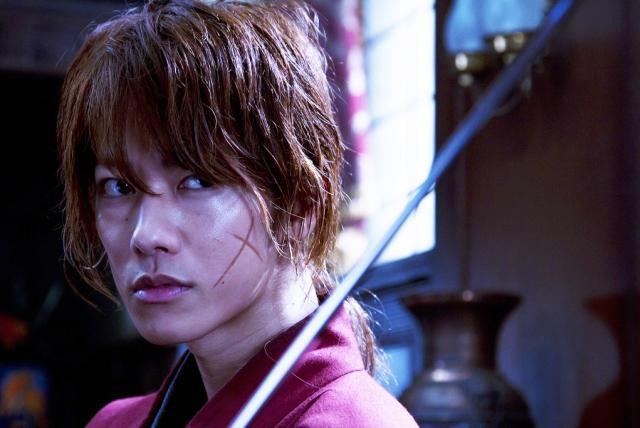
The live action adaptation of popular manga series Rurouni Kenshin (aka Samurai X) has proven itself a box office hit in Japan and it seems news travels fast, with original and encore sessions at the 16th Japanese Film Festival screenings selling out.
A 45 minute delay caused by technical issues did little to deter an eager crowd, who lined up around the block, much to the surprise of curious passers-by.
The adaptation is a mesh of sub plots revolving around Kenshin Himura (aka Hitokiri Battosai), a highly adept killer, who assists in the Imperial army’s victory against the Tokugawa shogunates at the battle of “Toba Fushimi”. Tired of the endless bloodshed and questioning his own morality, Kenshin retires his services, reversing his sword to a “back blade” as a symbol of his refusal to kill further.
Ten years later and Kenshin’s peaceful existence is interrupted by a series of senseless murders, where each victim is marked by an execution note falsely signed in Battosai’s name. On his quest to clear his name, Kenshin forms unlikely friendships with fencing dojo owner Kaoru Kamiya, her student Yahiko Myojin and street fighter Sanosuke Sagara.
Wealthy and eccentric drug lord Kanryu Takeda tries to force Kaoru and other villagers into giving up their land, so he can build a shipping dock for exporting opium. He keeps the beautiful and cunning Megumi Takani hostage as his pharmacologist and is enraged when she escapes, and finds protection with Kenshin.
The film’s plot is quite interlaced, making the initial storytelling confusing as you’re bounced between the whens and wheres of each sub plot. However, once established, everything comes together seamlessly. There are some effective filming techniques used, that add a traditional hint of samurai mysticism, whilst keeping a contemporary feel.
The characters are well cast; Takeru Satoh takes on the enigmatic, cheeky and at times nonchalant personality of Kenshin quite well. He also makes for a charming and handsome heartthrob, inciting more than a few sighs and giggles from the audience.
Yu Aoi portrays Megumi with great depth, revealing her dark troubled nature as well as her flirty, manipulative tendencies. Teruyuki Kagawa as the villainous Kanryu gives a standout performance, capturing the deceptive idiocy of the character with flair.
Fight choreography is swift, graceful and well executed, with great attention to detail and the film’s soundtrack also proves surprisingly ethereal in its Middle Eastern influences, backed by a full orchestral sound.
Whilst the film is mostly quite serious, the drama is thinned out with well-timed comic moments. With a combination of slapstick and dark humour, the funnier scenes translate across easily and were well met by hearty laughter.
Rurouni Kenshin is definitely one of the best live adaptation films to come out in a while. It does well to quell fears of being another flimsy production released to cash in on a manga’s popularity and is hard to fault.
Judging by the loud applause at end credits and the excited squeals of the audience, it seems both devout fans and first time viewers were ecstatic about the revitalised adaptation of this well loved series.
Review Score: 9.5 out of 10
———-
